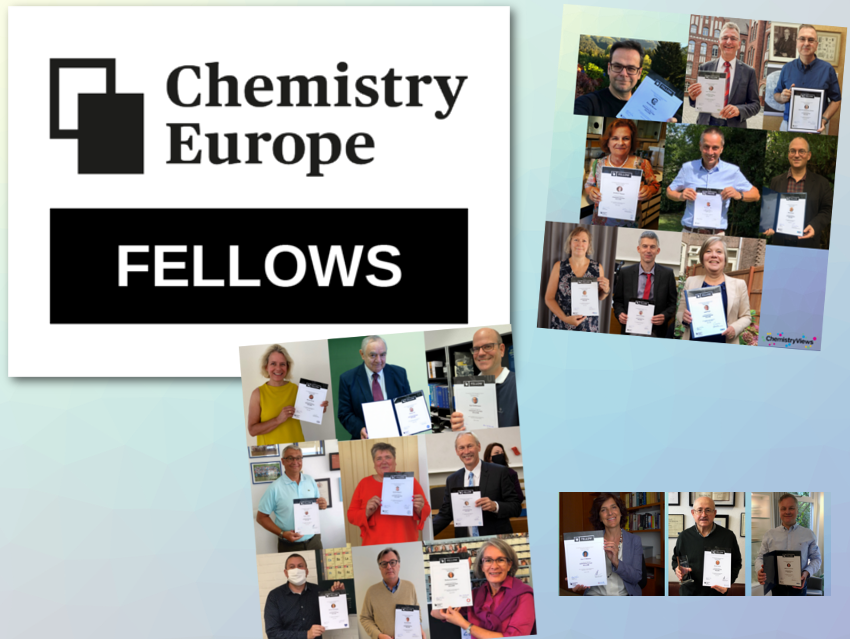Chemistry Europe Fellows Award Ceremony during the Coronavirus Pandemic
Last year, Chemistry Europe recognized the exceptional commitment of members of the chemistry community with its highest honor for the third time. The Chemistry Europe Fellows Program was established in 2015. New Fellows are announced every two years. In 2020, 37 Fellows were honored. There are now a total of 103 Chemistry Europe Fellows and 6 Honorary Fellows.
Traditionally, the new Fellows receive their certificates at a reception at the EuChemS Conference. However, the COVID-19 pandemic has changed the way we meet and interact. We were not able to honor the new Fellows at a reception at the 8th EuChemS Congress in Lisbon as planned. The congress will now take place in 2022. Therefore, together with the national membership magazines of the Chemistry Europe societies, we came up with a new approach: The Editors-in-Chief interviewed the Fellows from their society and published the interviews in their magazine.
These interviews provide a very nice insight into the experiences and careers of the Fellows. They talk about formative moments in their lives, discuss current issues, and reflect on chemistry in their country and globally. They also look back at historical visions for Europe and the individual chemical societies and a pan-European publication network.
To make this treasure accessible to a larger audience and to bring the individual interviews together, I will highlight some aspects and quotes from the interviews that resonate with me. At the end of this article, all interviews are listed. You are welcome to read the complete interviews and make up your own mind.
1 To Look Beyond One’s Own Nose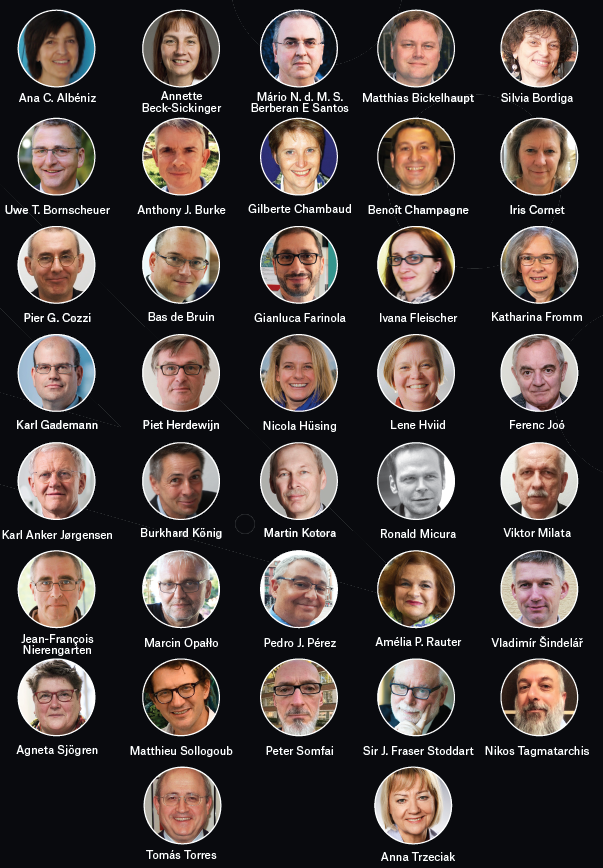
One of the recurring themes in the interviews is the importance of internationality and interdisciplinary approaches in science. How important both are becomes particularly clear once again in our current situation where we urgently need to find solutions for the coronavirus pandemic and climate change. This reminds us that global problems can only be solved on a global and interdisciplinary basis. “We live in a global village. Since the arrival of the coronavirus, we cannot simply look upon ourselves as citizens of small countries or big ones.”, says Sir Fraser Stoddart, Northwestern University, Evanston, IL, USA, and 2016 Chemistry Nobel Laureate. “Science is international”, he adds.
Also, Pedro J. Pérez, Universidad de Huelva, Spain, describes this by saying: “Achieving great goals requires networking at all levels.” And Benoît Champagne, University of Namur, Belgium, adds to the professional benefits that one must not forget “that friendship often grows out of long-term collaboration”.
I liked the way Tomás Torres, Universidad Autónoma de Madrid, Spain, expresses the fascination for interdisciplinary approaches. “What fascinates me most about chemistry is how its different parts become multidisciplinary and merge with each other. Will universal chemistry, which will eventually lead to universal science, emerge when the edges of chemistry merge with physics, biology, and so on?”
1.2 Early Vision
25 years ago, this attitude of thinking beyond borders led to the vision of a pan-European journal and the courageous cooperation of chemical societies from various European countries. Sir Fraser Stoddart was one of these visionaries. “I was a supporter of getting chemistry to be a European-based activity. I was also a huge supporter of the launching of Chemistry—A European Journal. This goal was my mission in the late 80s and early 90s when I was still in the UK.”
Karl Anker Jørgensen, Aarhus University, Denmark, also remembers this time: “My first contact was when national society-owned journals in Europe merged into European journals. This resulted in Chemistry – A European Journal in 1985, and the European Journal of Organic Chemistry and European Journal of Inorganic Chemistry in 1989.” A brave step to give up one’s own journal and try something new together.
Katharina M. Fromm, University of Fribourg, Switzerland, has a view of the development further along the line. “I cannot really tell when I was first aware of Chemistry Europe. When I finished my Ph.D. thesis in February 1994, the organization, then called “ChemPubSoc Europe”, was in the making, and thus, I kind of grew up with this spirit when it was launched. I remember that it was “there” at the “Chemiedozententagungen” and at other (inter-)national conferences. So, it was a natural environment and fitted extremely well with my own international upbringing.” Katharina Fromm was born in Germany and raised in France, Germany, and the United States. She adds: “Given today’s worldwide situation, Chemistry Europe is more important than ever to show the European spirit, reflecting that science takes place across borders of countries. It shows that national borders are meaningless when it comes to the advancement of research. I feel like a European chemist, if not even a world citizen.”
In the interviews, the Fellows expressed their enthusiasm for Chemistry Europe and the common idea behind it in many different ways. Here, I would like to quote just Gianluca Maria Farinola, Università degli Studi di Bari Aldo Moro, Bari, Italy, and President of the Organic Chemistry Division of EuChemS and of the Organic Chemistry Division of the Italian Chemical Society (SCI): “The main added value that Chemistry Europe offers to my work as an Italian researcher is to create an identity link of European chemical research. In this way, it contributes to the structuring of a community that recognizes itself in “its” journals, as, for example, American researchers do with the journals of the ACS. This sense of belonging also goes hand in hand with the pride of being, as Europeans, not only bearers of a scientific tradition of the highest level and great history, but also of a professional and social ethic rooted in our cultural values, which is also reflected in our research and in the quality of our publications.”
In addition, he says of the multidisciplinary approach: “ChemPubSoc Europe was one of the first to create journals explicitly inspired by studies of cross-fertilization between different fields of research, becoming the forerunner of an approach that is now common in contemporary science. Just think not only of Chemistry – A European Journal, the flagship journal of Chemistry Europe, but also, to give an example, of ChemPlusChem, which makes cross-disciplinarity its distinctive feature and offers a platform to those scientific studies that escape traditional classifications.”
1.2 Current Goals and Visions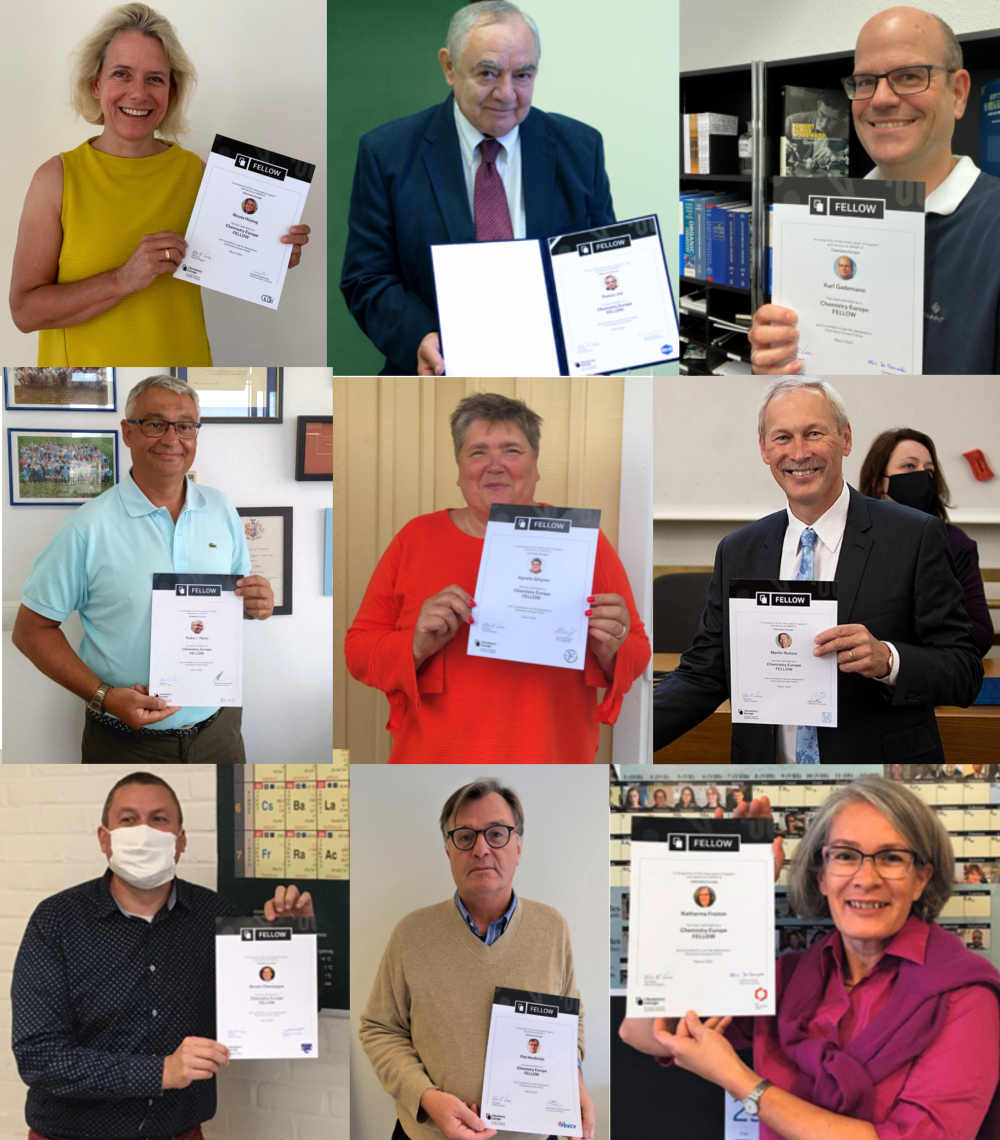
So what are the current visions for chemistry and science in Europe? I have picked out a few topics from the interviews. They again show how important internationality is to the Fellows, but they also reflect the role of chemical societies.
Ana C. Albéniz, University of Valladolid, Spain, believes that “chemistry has to have a strong voice in society in general and towards the political and economic powers. This is a need that goes beyond the national level and can only be achieved together with unity.” Therefore, the participation of national societies such as the Spanish Chemical Society (RSEQ) in European entities such as EuChemS or Chemistry Europe is fundamental to her.
It is also important and our task as chemists to communicate better with society and to continuously find new ways to share our fascination about chemistry as well as our knowledge. Karl Anker Jørgensen suggests that “scientific societies should aim to improve the understanding of society for the importance of science. We are living in a period where scientific facts easily can be ignored. However, our society is based on science, and science is necessary for solving some of the important challenges we are facing.”
Pedro J. Pérez sees the task of national chemical societies as promoting chemistry in their own countries. In his opinion, this should range from events and activities for young people, such as the Chemistry Olympiad or science weeks for young people at the pre-university level, to congresses and scientific meetings at the highest research level for professionals. “At the same time, they [the societies] must be interwoven at the international level through cooperation with other societies in other countries to achieve common goals.”
According to Karl Gademann, University of Zurich, Switzerland, the chemical societies are best suited especially for young people to network. “I always encourage the next generation of scientists to participate in activities on the national and international level, from conferences and meetings organized by the SCS [Swiss Chemical Society], the SCNAT [Swiss Academy of Sciences], or the corresponding chapters for junior scientists. A strong network can only be built based on interactions, and the Swiss community is ideally suited for this purpose. … Personal interaction can never be replaced and will be of crucial importance in shaping the European Research Area further.”
Matthias Bickelhaupt, Vrije Universiteit Amsterdam, The Netherlands, adds that “such a European platform is enormously important to achieve sufficient reach on the world stage, not least to retain our own talents and to attract talent from other parts of the world.” Benoît Champagne thinks that: “We should have more general meetings in Europe. The American Chemical Society, for example, has two major meetings a year and with EuChemS we have one meeting every two years. To increase our personal scientific connections, we need to see other scientists and get to know each other. That is important and takes time. I think it is important to create situations where scientists can form new collaborations and ideas for collaboration can emerge.“
“Regarding support for research, it is more important than ever to guarantee part of the resources for completely free, visionary research”, says Silvia Bordiga, University of Turin, Italy. “Free from the schemes dictated by national and international projects developed according to a model based on “deliverables” and “milestones”. Proposals dealing with studies in new areas must be encouraged, even if no spin-offs are currently emerging, and space must be created for younger people, even if they do not yet have an established position in the system.”
2 Which Language Do We Speak?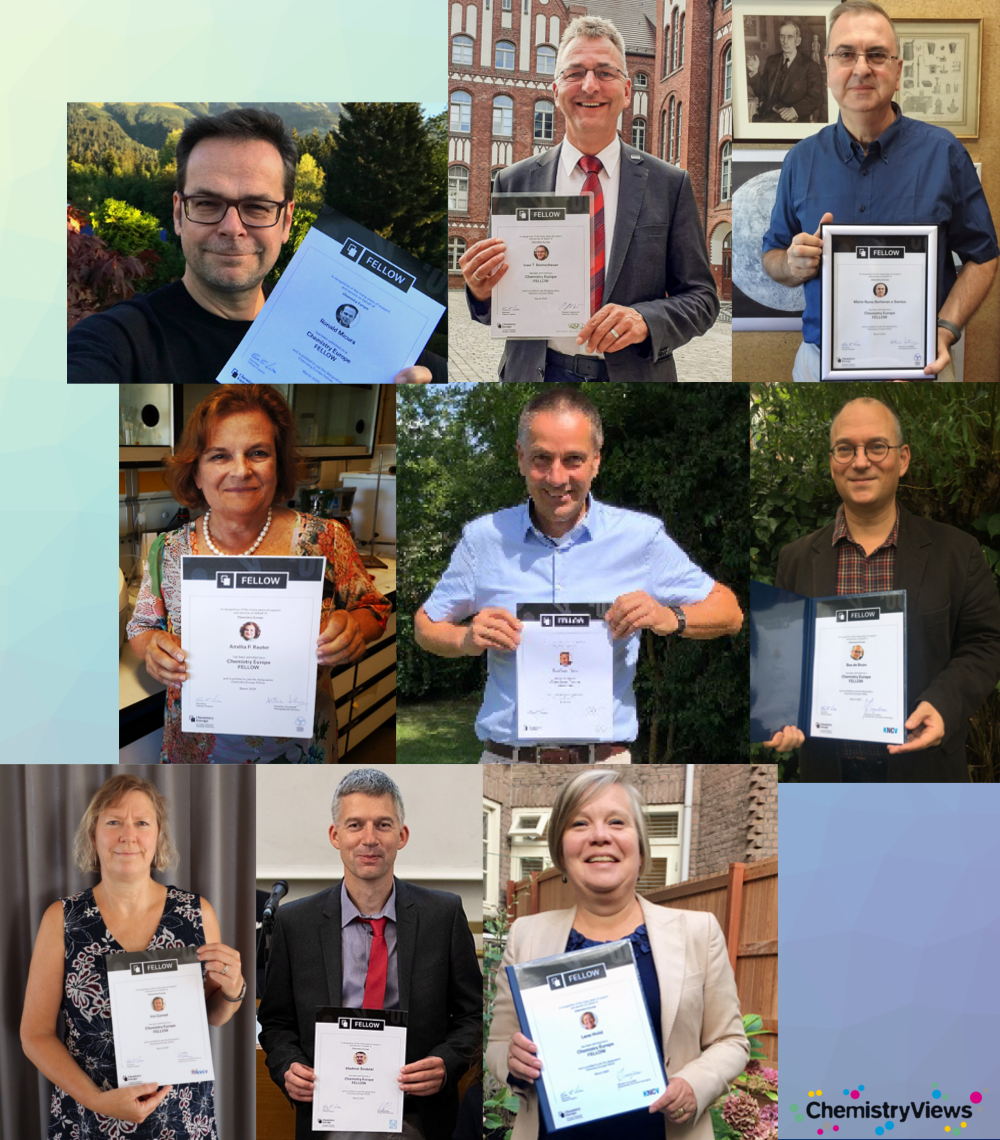
As mentioned, the interviews appeared in the national magazines of the chemical societies and in ChemistryViews, the magazine of Chemistry Europe. Most of the national magazines publish in the national language of their respective country. For decades, these magazines have been an important link between the societies and their members, often accompanying the members throughout their whole careers. The Italian magazine La Chimica e l’Industria, for example, was founded in 1919 and has just celebrated its 100th anniversary. Despite this amazing history, the Editors and societies are faced with the question of whether publications in their national languages are still useful and important or whether they should switch to English. Some thoughts of the Fellows on this.
First of all, “science is enriched by the sum of everyone’s work, and if we cannot understand what others are saying, progress is seriously affected.” We can all agree here with Pedro J. Pérez, but how does it work in detail?
Silvia Bordiga says “Europe has so far played a leading role in the development of chemistry […] There is no doubt that, to maintain a leading role, we need a chemistry that speaks a common European language, overriding national interests and acting as a spokesperson for global needs, catalyzing the spread of chemical culture.” This is especially true in Europe, where so many countries and languages are so close together.
Ana Carmen Albéniz suggests that “the chosen language must ensure perfect communication between the interlocutors. Therefore, communication about chemistry with the general society must be in the local language. Not only that but also the chemical jargon must be adapted so that the public clearly understands the message and without it losing its accuracy.”
So it helps us to communicate with society if we can also express ourselves in our local language and not just know all the technical terms in English. Silvia Bordiga admits that “writing a scientific text in Italian was more challenging than I expected.”
But Ana Carmen Albéniz also says: “It is different for the exchange between researchers, because it usually goes beyond the national sphere. National congresses also invite guests from other countries. Here, currently English guarantees good communication.” We do not know what the future will bring but for sure things will not always stay the same. “English might remain the dominant language in science for some time to come but I feel its days are numbered.” Fraser Stoddard says.
3 The Times They Are a-Changin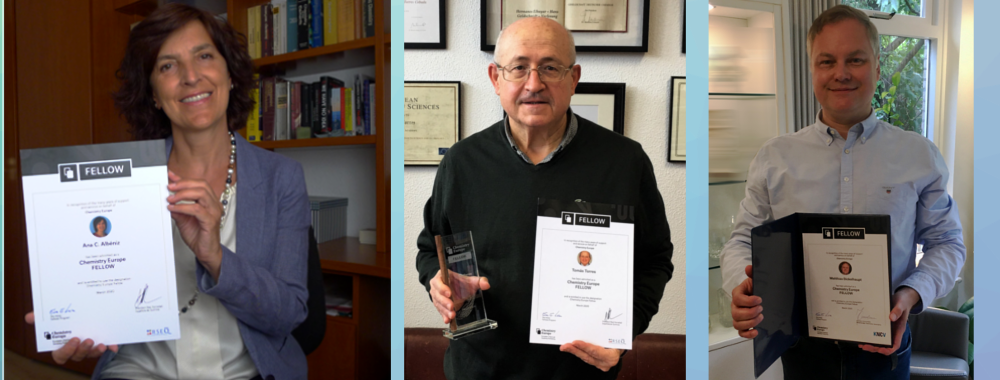
Pier Giorgio Cozzi, University of Bologna, Italy, rightly says that “journals are our primary source of knowledge and should be preserved and highly valued, as they allow us to stay constantly and continuously up to date.”
Similar to the way we are currently experiencing that how we meet is changing a lot, processes of change have already altered our reading habits of journals in the last years. Ferenc Joó, University of Debrecen, Hungary, describes this very well:
“When I was a novice researcher, the chemistry library of the University of Debrecen had practically all the important journals that a chemist had to look through.” Silvia Bordiga describes herself and others during this time as “the chemists’ generation who anxiously waited for the journals to arrive at the library so that they could be read.” Ferenc Joó describes that they “usually did this from the first page to the last. Of course, we did not read everything, only what aroused our interest. It often happened that we came across an article that did not necessarily belong to our field of research, but was interesting, thought-provoking, or even provocative.
In those days, that could still be done. Today, when the table of contents of the journals I selected (which are thus limited) and even the titles of the just accepted publications appear on my screen in many, many lines per day, just a quick selection of interesting articles takes a lot of time. Especially if for some reason I haven’t gotten around to it for several days. In addition, there comes the difficulty of getting to the interesting publications, because many libraries today don’t even have the most important journals, mainly because of skyrocketing prices. If you manage to do all that, reading the article itself already falls into the category of enjoyment.
Alternatively, it may be more successful and faster to search the chemical literature using, for example, keywords. But you don’t always get what you are looking for and want to fish out of the sea of information. And the probability of not reading an article that doesn’t belong to your research topic, thus, drops to practically zero.”
Maybe this will improve a lot in the future due to better and better search engines. Still, the number of publications increases and
Silvia Bordiga is also of the opinion that “it has become difficult to “read” in depth everything that is published, many times we stop only at a graphical abstract.”
4 Attracted to Chemistry
In several interviews, the Fellows answer how and when they developed an interest in chemistry. For many, it was a good teacher who sparked their interest. Thus, Sir Fraser Stoddart describes that “My interest in chemistry started quite traditionally. I had three outstandingly good chemistry teachers at my high-school in Edinburgh.”
Benoît Champagne raves about the hands-on experiments he was able to do at school and he also experimented with a chemistry set at home. Some of these experiments are now not allowed to be done, such as making chlorine from hypochlorous acid. “That stuck in my mind because some of my mom’s plants didn’t do well with that.”
I was very enthusiastic about the answer given by Tomás Torres, Universidad Autónoma de Madrid, Spain, because it is so different and untypical. His interest in chemistry arose “at the age of 14, when my cousin Isabel gave me a “Cheminova” [chemistry set]. It is curious how a simple act can mark a path, at the end of the day.” I thought this means that there is hope for all those who are not lucky enough to have an outstandingly good chemistry teacher. And again, it shows how important it is that we share our fascination.
Karl Anker Jørgensen also had an interesting path to chemistry. “When I was young, I used most of my time in high school and at university performing track and field (decathlon and 110 m hurdles). I represented Denmark on an international level. It was only after my last European Cup in 1981 that I started to become seriously interested in science.” He can also tell exciting stories about his contacts in the music and art scenes.
5 No Chance for Pessimism
I enjoyed reading the different interviews, they give a wonderful insight into the different characters and thoughts of these chemists and have again inspired me to think differently about the changes of our time. What will emerge from all this in 25 years time as an idea or vision that has prepared a good path for the future?
It has become clear to me once again that networking across national and professional boundaries is indispensable and that how individuals have done this has changed over the past 25 or so years and continues to do so. But, to quote Pedro J. Pérez once again, it remains unchanged that: “Achieving great goals requires networking at all levels.” And, another quote from him: “Every day something new is known, every day is a step forward towards the infinite end of absolute knowledge.” I think, sometimes we should look back and be happy about what human beings have already achieved, and we should share our confidence in what we are yet to learn.
References
- Catherine Housecroft, Chemistry Europe Fellows Katharina M. Fromm and Karl Gademann, Chimia 2020, 74, 1026–1027.
- Miguel A. Sierra, Elena Sáez, Los Nuevos Chemistry Europe Fellows, Anales de Química 2020, 116(4), 206–208.
- Jenny Hasenack, Chemistry Europe appoints fellows, C2W/MeMo 2020.
- Anna Simonini, Nuovi Chemistry Europe Fellows, La Chimica e l’Industria Online 2020, 4(6), 14–20.
- Tamás Kiss, Beszélgetés Joó Ferenccel, a Debreceni Egyetem professor emeritusával, az Európai Kémiai Társaság Chemistry Europe Fellows magyar kitüntetettjével, Magyar Kémikusok Lapja 2020.
- Benoît Champagne, Chimie Nouvelle, personal comments.
- Vera Koester, Sir Fraser Stoddart, Supporting a Bigger Us, ChemistryViews 2020. https://doi.org/10.1002/chemv.202000086
- Vera Koester, Karl Anker Jørgensen, Borders of Cycloaddition and Chemistry of Frescos, ChemistryViews 2020. https://doi.org/10.1002/chemv.202000097
